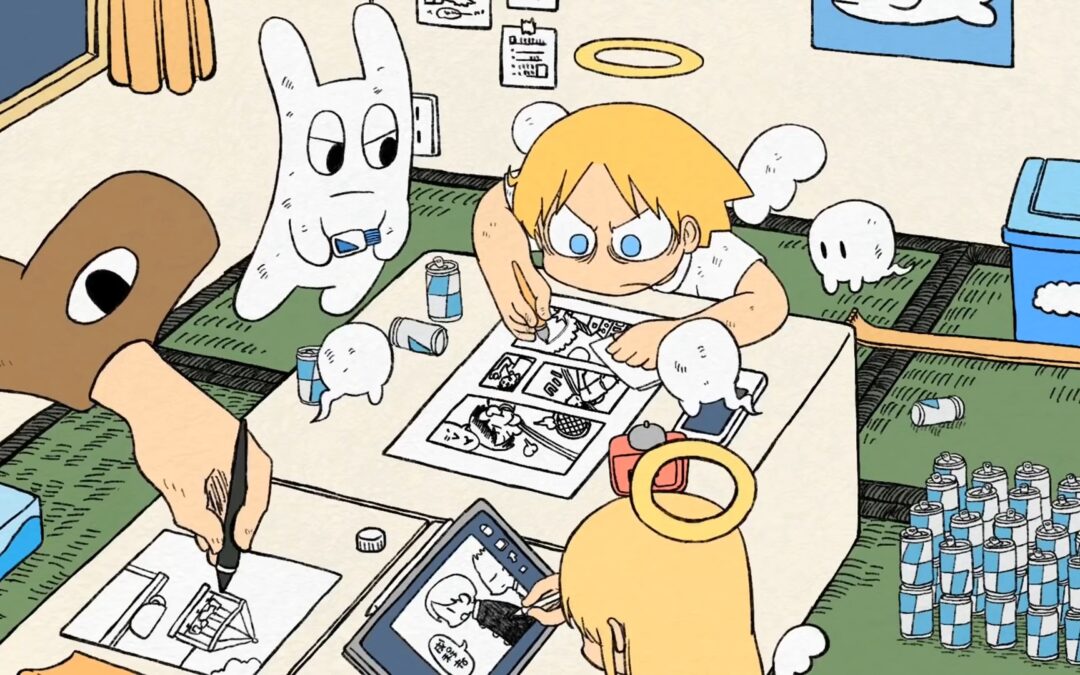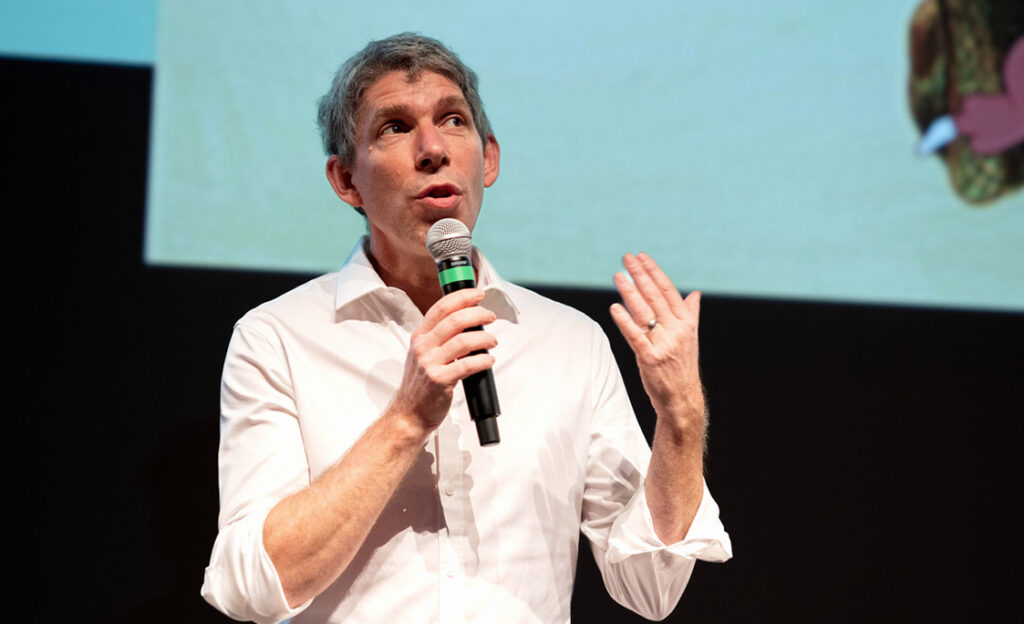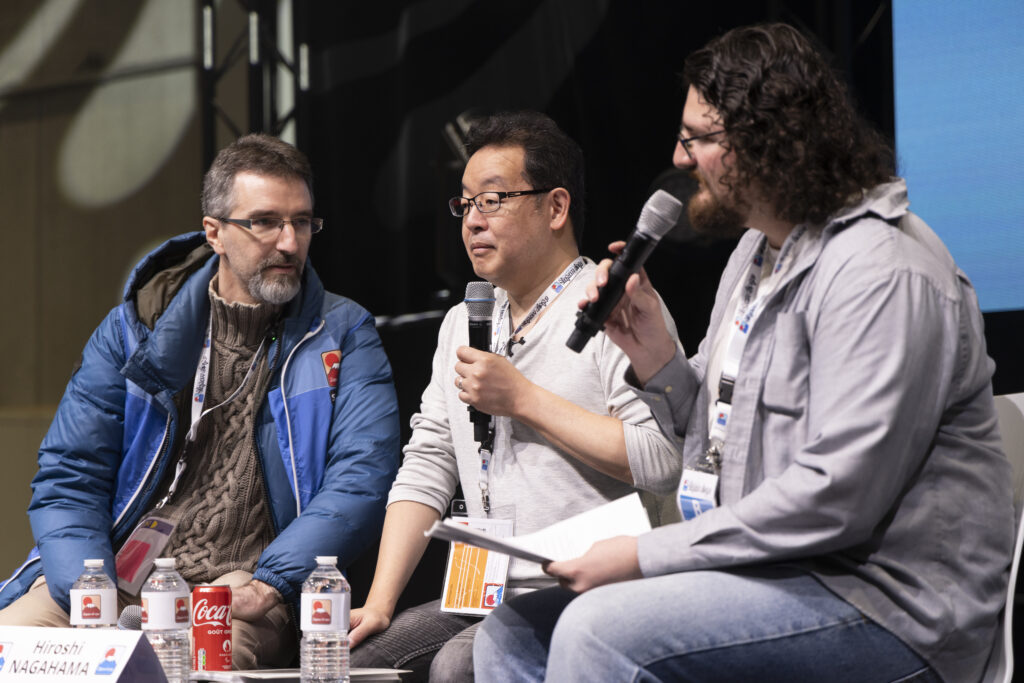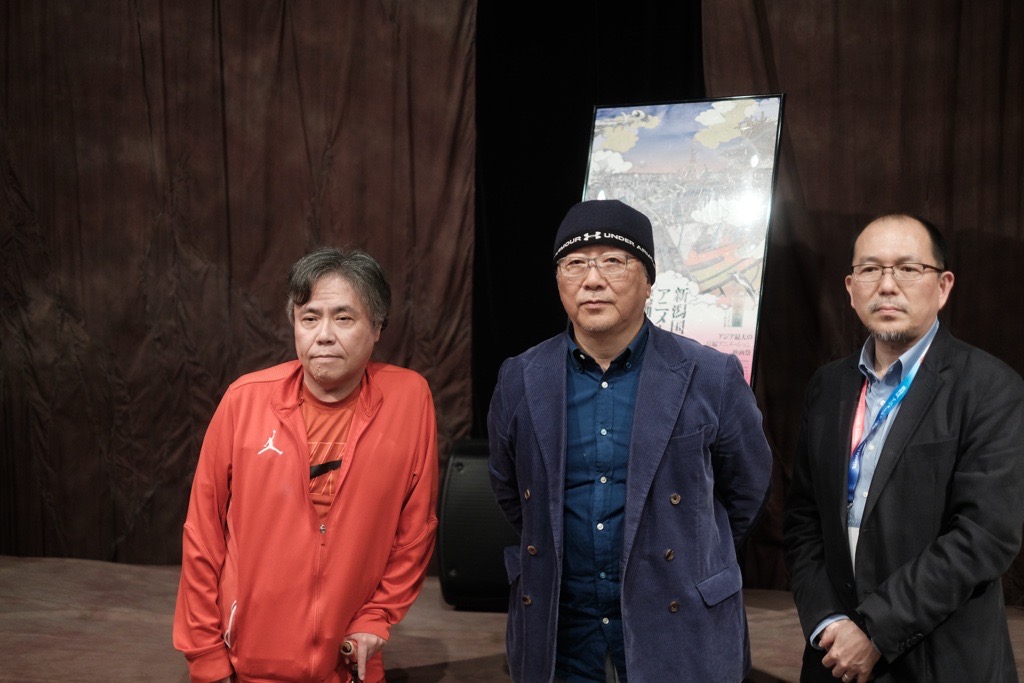With his unique sense of humor and round, cute character designs, Keiichi Arawi is an artist whose work always makes you feel good whenever you encounter it. Among animation fans, he’s mostly known for being the original creator of Nichijou, a hit manga that became, between the competent hands of studio Kyoto Animation, one of the best-animated comedies ever put to the screen. But Arawi is much more than just a mangaka: he is also a prolific illustrator, an occasional plastic model designer, and even a web animator. Indeed, since the spring of 2020, Arawi has started regularly putting up animated shorts he did on his YouTube channel; it is those shorts that I’d like to talk about in this article, to see how his skills translate over to the medium of animation – in a way quite different to the way they have been reinterpreted in Nichijou’s anime adaptation.
Like our content? Feel free to support us on Ko-Fi!
With only 12 videos, Arawi’s output is still small, but it has definitely accelerated in the last year. His first work dates to 2015, with a 3-minutes long motion comic featuring characters from Nichijou. It is however only in 2020 that he started releasing real animated shorts, of two kinds: monthly reports, where he tells some anecdotes about himself and presents his latest works, and little comedic stories that never go past 3 minutes. It is these latter stories that I will be going over, in chronological order.
The earliest short, titled “Close Encounters”, is fairly simple stuff: featuring Mai from Nichijou and a jellyfish-looking alien, it is just a still shot with cycled animation of the alien levitating and the wind in Mai’s hair. It is just, at this point, an animated illustration, but Arawi exploited this precisely to create the gag. The animation cycle, the alien’s strange design, and the simple, brown background, all create an eerie atmosphere, that’s only reinforced by the strange objects Mai is holding (a fish and a hammer) and the strange sound of the alien’s voice, played by Arawi himself.
The dialogue only creates an even weirder feeling: the extremely arrogant (as all superior lifeforms should be) alien first introduces itself, then announces it’s going to invade Earth. But nothing happens, and the animation cycle keeps repeating itself. Unable to make sense of Mai’s lack of a reaction, the alien starts interrogating her, first questioning the strange objects she’s holding, and then asking her if she understands anything of what it’s saying. As nothing changes and the bewildered alien asks “what on Earth are you doing here?”, we realize that the really strange being here is Mai, and not the extraterrestrial.
This is fairly simple stuff, and the animation is still basic. But Arawi’s absurd humor gets its first chance to shine, as well as his complete mastery of how to use animation to sell the gag. The almost complete immobility throughout all the short is precisely what makes it fun, and the way the monologue turns the tables on the alien and on the viewer creates this awareness. This gag wouldn’t work as well in any other medium, and it’s proof of Arawi’s comedic intelligence to have realized it.
But this first short was but the beginning, and the following ones would only get more technically and comically complex. The second one, titled “Desperate”, once again pits a Nichijou character (this time, Yukko) against a the same alien: this time, it has taken over Mio’s body and speaks telepathically to Yukko, a monologue that we can read through on-screen text. The gag structure is also similar, since the alien is slowly losing composure before the completely distraught Yuuko, creating a sort of silent manzai duo, until Yuuko unexpectedly pulls a wrestling move and kills the invader from outer space. Although there’s no voice-over this time, Arawi’s attention to sound design still shines through, as the high-pitched sounds of a string instrument punctuate the text and the action.
The real highlight here is that there’s real animation and editing, in service of a progressing narrative as Yuuko tries out different, more or less absurd, techniques to drive out the intruder. The animation is still mostly cycles, but they are notably more elaborate: the animation of Mio’s levitating body, although simple, is delightful and pleasant. Arawi’s approach to motion is definitely a “full” one, in that it is the entire body that is animated at once, creating a sense of physical coherence and presence, but also inviting the viewer to pay attention to all the small details of the movement. The 5-frames long cycle of Yukko’s heavy breathing is also fun in its own right, as the hiragana characters change into puffs of white smoke and then disappear. This first image also features sweat dripping all over Yukko’s body, even over her clothes. It’s in itself a fun visual gag, but the way the outline of Yukko’s body adopts that of the falling sweat drops is the first indication of Arawi’s special approach of body outlines, that he would only develop later with his use of smears.

In general, this short also exemplifies Arawi’s mastery of rhythm, with the contrast between the long still shots of Yukko staring at Mio’s levitation, and her sudden ideas on how to chase away the alien. The moment when it’s best used is when Yukko suddenly takes out a cross and garlic, but starts blinking faster and faster in bewilderment when she realizes it doesn’t work. Once again, this show’s Arawi’s capacity to create gags with the simplest of animation techniques. But all this only serves as build-up to the short’s climax – a sudden close-up on Yukko’s face, distorted in a typically rough, silly Arawi expression, and then a wrestling move.
The rhythm is perfectly nailed down, as we get 3 quick shots highlighting the major steps of the movement, and then the move itself. It’s without any doubt the highlight of the short, and shows that by that point, Arawi had nailed down two of animation’s essential techniques : spacing, and slow-in/slow-out. We begin pretty slowly, as Yukko sets her grip and position, but then there’s a sudden snapping, without any frame in-between the beginning of the motion and the girls smashing against the ground. It feels extremely sudden and powerful, only reinforced by the fact that Mio’s legs are reduced to mere brushstrokes, the rough linework on the smoke, and the typically Arawi gag that consists of not drawing the character’s face when completely taken in by an action.
It is the third short, however, that is in my mind Arawi’s animated masterpiece. Titled “The Drawing Song” and featuring the characters from his Helvetica Standard manga, it is a happy and poetic music video telling the day-to-day life of a manga artist. The fact that it’s a music video, with a guitar tune by one Hirotani-kun (probably one of Arawi’s friends or assistants) and lyrics by Arawi himself, already shows that this was a more ambitious project, showcasing all of the artist’s talent.
The thing that first jumps to the viewer’s eye is Arawi’s excellent editing, always creative and dynamic. The cinematography always plays with the space of the screen, from the first shot or the credits where half of the screen is blank to tactfully placed split-screens and unexpected, creative transitions. In tune with the guitar and singing, it creates a sense of rushing joy and fun, just what you’d expect from an artist specializing in the little wonders of daily life.
The excellent cinematography is also the perfect complement to Arawi’s art as illustrator, which beautifully comes to the fore here: all the backgrounds, from the house of the artist to the fantasized bathhouse are full of little details that make you want to inhabit this world and share the same dream. Indeed, this short relies heavily on a dream logic, beautifully brought to life by animation. The best instance of this is at the beginning, from 0:21 to 0:24, when the angel Pino’s saliva spreads upon the table, becoming a sea for a boat to sail on, bringing us through rapid-fire editing to outer space and finally the moon where everybody can share the fun of making mochi cakes.
The animation, too, is extremely detailed and dynamic. The standout there is definitely Arawi’s use of smears, a perfect complement to the thick outlines of his character designs. It contributes to his cute, round aesthetic, but also perfectly fits in the sense of rush and manages to give birth to some great visual gags. My favorite one of those is when Pino is struggling to find ideas, grandiosely rejected by Mono-Eye and her Buddhist temple’s bell clapper. The ideas flash by faster than the eye can see, a series of common or not so common objects drawn just above Pino’s head. But when the ideas get rejected and hit by Mono-Eye, it’s not just them that fly out the screen with heavy smearing, but also Pino’s head that’s sent wavering from left to right in a silly deformed face.
Another great example of how Arawi creates gags through the animation is in the sequence just after that, when Pino, with her new idea, jumps on a cute, smiling cloud to get back to drawing. This moment is a lesson in exaggeration and anticipation. We begin with Pino falling from the top of the screen, and nearly going through the cloud – but then, without any in-betweens, she bounces back up, and it takes a few more frames for her to settle down. Once she has, though, she has a maniac look on her face and immediately starts her cloud. Its motion is also very unexpected and fun: it starts by lifting its fore section, then slowly gets ready to depart, contracts and suddenly jumps in yet another feast of smears, going so fast that Pino’s halo and wings are left behind.
This little cloud sequence, as well as a later one with a bike, show that Arawi’s talent shines the most in effects animation, especially in cloud and smoke effects. His round linework conveys a perfect sense of texture and volume, while the smearing work goes perfectly hand in hand with the free shapes adopted by the smoke.
Anyhow, with this short, Arawi clearly showed that he had completely mastered the craft, not only building upon his artistic sensibilities, but pushing them further in a new medium that enabled him to play with new tools. Although it was already crystal clear from his manga, Arawi’s mastery of rhythm really blossoms in animation, where editing, timing and spacing help him reinforce it even more.
After that, Arawi introduced yet a new character, in what might seem to be a new series of shorts released regularly: that’s Amemiya-san, a high-schooler girl that had appeared in a weekly manga titled Heaven that Arawi did for Animage. So far, there have been 2 Amemiya-san shorts, released only a month apart, and, in perfect Arawi fashion, they follow the strange day to day events of Amemiya’s life.
The first one, “Amemiya-san at 3 in the morning”, exhibits very different qualities from the previous shorts. As always, the entire thing relies on Arawi’s sense of rhythm, but the way it’s expressed here is very different: rather than just rapid-fire editing or expressive timing, what Arawi does here is create a contrast between sudden bursts of movement and more still moments. A good example of that is from 0:44 onwards, when Amemiya, fully equipped, starts walking around her house looking for what she thinks is a robber. In the first shot, Amemiya’s walk, everything is really slow, and the animation pretty detailed – this slowness is mostly sold through Amemiya’s legs trailing back, slightly spread, at a slower speed. Then we cut to a series of shots of the devastated house and reaction shots of Amemiya’s face, a bit more bewildered every time. Besides the fun expressions, the gradation here is conveyed by the fact that, in each new shot, Amemiya’s face is simply a bit more animated and deformed. This perfectly prepares us for the slow, deliberate movement of Amemiya getting ready to attack the robber, in extremely fluid and evenly-timed animation – motion that once again enters in stark contrast with the stills that follow as Amemiya discovers the Foodie Ghost in her kitchen.
The second Amemiya short, “New School Term”, is yet again quite a different exercise. It exemplifies all of Arawi’s techniques and strengths that I already highlighted, especially his love for smears and elastic character animation, but what really makes it shine is its setting and worldbuilding. Although the richness of Arawi’s inner world had been hinted at in previous shorts, it really comes out here as the viewer has the opportunity to explore it a bit more along with Amemiya. The backgrounds and colors are simple, in Arawi’s characteristically round and minimalistic style, but the way he adds little straight lines or dots to suggest details makes everything that much more attractive.
Moreover, the complementarity between the story, visuals and sound have never been as nailed down as in this short. This is most obvious in the sequence with the four cats, each one in a box of a different color, meowing in tune with the background song. The perfect meeting between all the aspects of the video creates a comfortable, dreamlike atmosphere. But this is, after all, a world where coffee cups grow on clouds and where cute white dogs act as police officers…
The one thing that shines through the most clearly in Arawi’s short animations is his talent. As I said, each one of the shorts builds upon his unique kind of absurd, dreamy humor, but they all go further, using the specificities of the animated medium to create even more gags and adorable little actions. Being “adorable” is also what’s so great about Arawi’s animation: they all contribute to create new sections of the mundane but wonderful world that Arawi inhabits and that he shares with his readers and audience.
Like our content? Feel free to support us on Ko-Fi!
You might also be interested in
Benoît Chieux, a career in French animation [Carrefour du Cinéma d’Animation 2023]
Aside from the world-famous Annecy Festival, many smaller animation-related events take place in France over the years. One of the most interesting ones is the Carrefour du Cinéma d’Animation (Crossroads of Animation Film), held in Paris in late November. In 2023,...
Directing Mushishi and other spiraling stories – Hiroshi Nagahama and Uki Satake [Panels at Japan Expo Orléans 2023]
Last October, director Hiroshi Nagahama (Mushishi, The Reflection) and voice actress Uki Satake (QT in Space Dandy) were invited to Japan Expo Orléans, an event of a much smaller scale than the main event they organized in Paris. I was offered to host two of his...
Akira stories – Katsuhiro Otomo and Hiroyuki Kitakubo talk at Niigata International Animation Film Festival 2023
Among the many events taking place during the first Niigata International Animation Film Festival was a Katsuhiro Otomo retrospective, held to celebrate the 45th anniversary of Akira and to accompany the release of Otomo’s Complete Works. All of Otomo’s animated...





Recent Comments